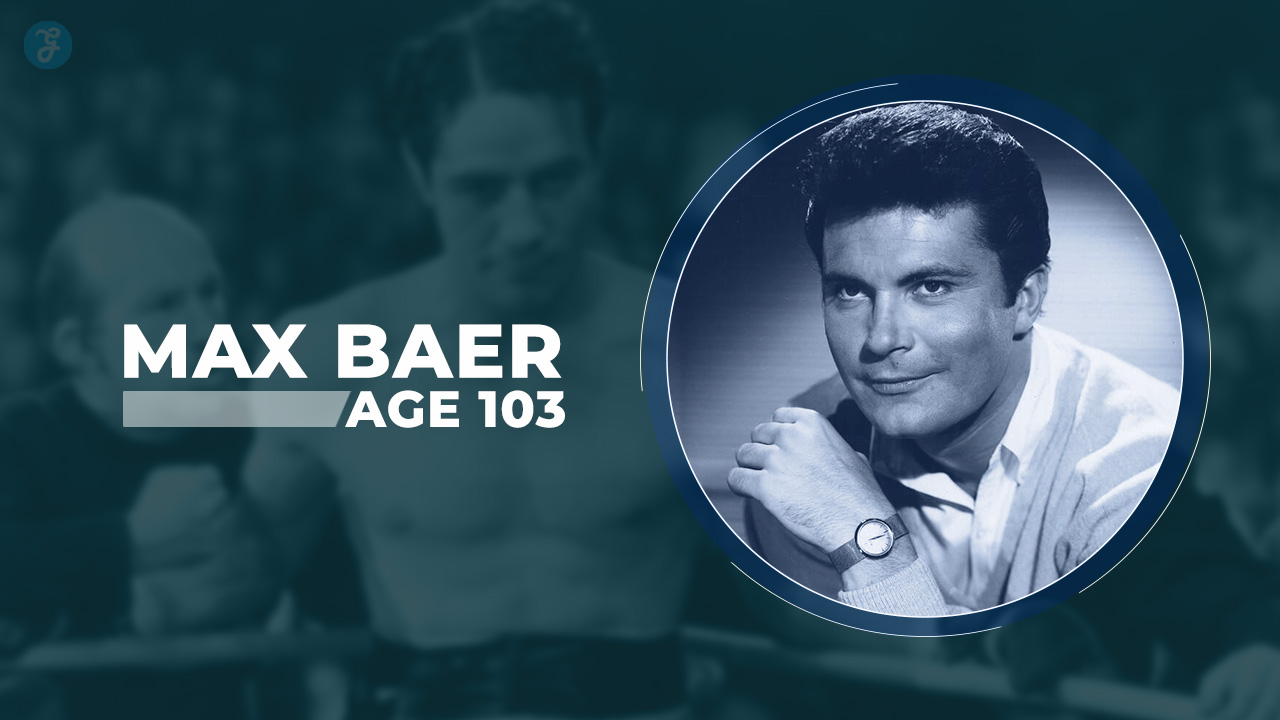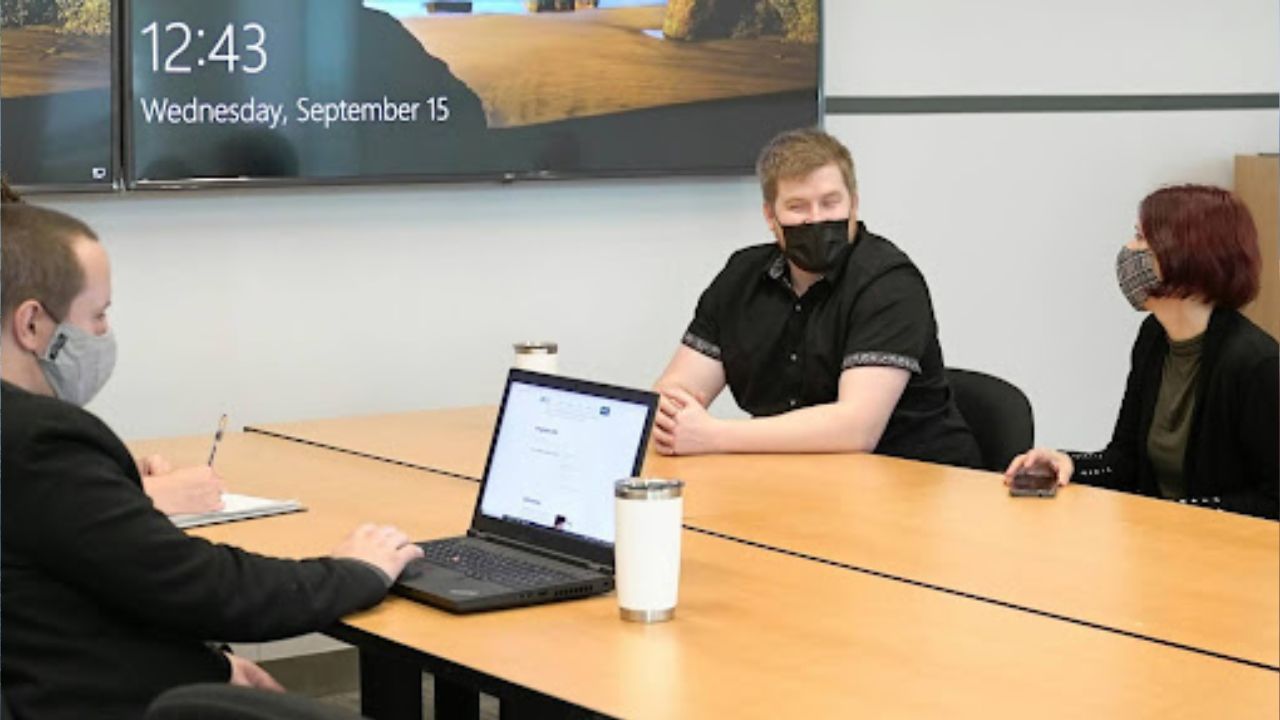Headaches are among the most common health complaints, affecting millions worldwide. Whether it’s a dull ache, a throbbing pain, or a full-blown migraine, headaches can significantly impact our daily lives, productivity, and overall well-being.
While over-the-counter medications are often the go-to solution, there are numerous effective DIY methods to relieve headaches naturally, without the potential side effects of pharmaceuticals.
This comprehensive guide will explore the ten best do-it-yourself ways to alleviate headache pain. These methods range from simple relaxation techniques to dietary adjustments and natural remedies.
By incorporating these strategies into your routine, you may find relief from headaches and improve your overall quality of life.
Before diving into the specific techniques, it’s important to note that while occasional headaches are expected, a healthcare professional should evaluate frequent or severe headaches.
These DIY methods are meant to complement, not replace, medical advice. With that in mind, let’s explore natural, at-home ways to combat headache pain.
1. Hydration: The Simple Yet Powerful Remedy
Proper hydration is one of the most overlooked yet effective ways to prevent and relieve headaches. Dehydration is a common trigger for headaches, as it affects blood volume and oxygen flow to the brain.
How It Works
When you’re dehydrated, your blood volume decreases, reducing oxygen flow to the brain. This can cause blood vessels to dilate, resulting in a headache. Also, dehydration can lead to electrolyte imbalances, triggering or worsening headaches.
Implementation
- Aim to drink at least 8-10 glasses (64-80 ounces) of water daily.
- Increase your intake during hot weather or physical activity.
- Keep a water bottle with you throughout the day as a reminder to drink regularly.
- Use apps or intelligent water bottles to track your water intake.
- Eat water-rich foods like cucumbers, watermelon, and leafy greens.
Tips for Success
- Start your day with a glass of water to kickstart hydration.
- Flavor your water with slices of lemon, cucumber, or berries if you find plain water unappealing.
- Set reminders on your phone to drink water at regular intervals.
- Limit caffeine and alcohol intake, as these can contribute to dehydration.
Scientific Backing
A study published in the journal Headache found that increasing water intake by an average of 1.5 liters per day reduced headache intensity and duration in patients prone to migraines and tension headaches.
By making hydration a priority, you’re not only addressing a common headache trigger but also improving your overall health and well-being.
2. Mindful Relaxation Techniques
Stress and tension are major contributors to headaches. Relaxation techniques can help alleviate stress, reduce muscle tension, and relieve headache pain.
How It Works
Relaxation techniques work by activating the body’s natural relaxation response. This response counteracts the stress response, lowering heart rate, blood pressure, and muscle tension. By reducing these physiological stress markers, you can often alleviate headache pain.
Implementation
-
Deep Breathing:
- Find a quiet, comfortable place to sit or lie down.
- Breathe in slowly through your nose for a count of 4.
- Hold your breath for a count of 7.
- Exhale slowly through your mouth for a count of 8.
- Repeat this cycle for 5-10 minutes.
-
Progressive Muscle Relaxation:
- Starting with your toes, tense the muscles for 5 seconds, then relax for 30 seconds.
- Work your way up through your body, tensing and relaxing each muscle group.
- Pay special attention to areas where you hold tension, like your neck and shoulders.
-
Mindfulness Meditation:
- Sit comfortably and focus on your breath.
- When thoughts arise, acknowledge them without judgment and return your focus to your breath.
- Start with 5 minutes and gradually increase the duration.
Tips for Success
- Practice these techniques regularly, not just when you have a headache.
- Use guided relaxation apps or videos if you find it challenging to practice independently.
- Create a calm environment free from distractions during your relaxation practice.
- Be patient – the benefits of relaxation techniques often increase with regular practice.
Scientific Backing
A study published in the journal Pain Management Nursing found that relaxation techniques significantly reduced the frequency and intensity of tension headaches in participants who practiced regularly over eight weeks.
Incorporating these relaxation techniques into your daily routine can relieve headaches and improve your overall stress management and mental well-being.
3. Essential Oil Therapy
Essential oils have been used for centuries in traditional medicine to treat various ailments, including headaches. Certain essential oils have properties that can help alleviate pain and promote relaxation.
How It Works
Essential oils work through aromatherapy and topical application. When inhaled, the scent molecules travel from the olfactory nerves to the brain, particularly the amygdala and limbic system, which are involved in emotions and memory. Some oils also have analgesic and anti-inflammatory properties when applied topically.
Implementation
-
Peppermint Oil:
- Known for its cooling effect and ability to improve blood flow.
- Dilute with a carrier oil and apply to temples and neck.
- Inhale from the bottle or use in a diffuser.
-
Lavender Oil:
- Renowned for its calming properties and ability to reduce stress.
- Apply diluted oil to temples, neck, and wrists.
- Use in a diffuser or add a few drops to a warm bath.
-
Eucalyptus Oil:
- Can help clear nasal passages and relieve sinus headaches.
- Add a few drops to hot water and inhale the steam.
- Use in a diffuser or apply diluted oil to the chest and temples.
Tips for Success
- Always dilute essential oils with carrier oil (like coconut or jojoba oil) before applying them to the skin.
- Perform a patch test to check for any allergic reactions.
- Use high-quality, pure essential oils for best results.
- Experiment with different oils to find what works best for you.
Scientific Backing
A 2016 study published in the European Journal of Neurology found that peppermint oil was as effective as acetaminophen when applied topically, relieving tension headaches.
Essential oil therapy can be a pleasant and effective way to manage headaches, especially when combined with other relaxation techniques.
4. Acupressure and Self-Massage
Acupressure and self-massage are ancient healing techniques that can significantly relieve headache pain. These methods involve applying pressure to specific points on the body to alleviate pain and promote relaxation.
How It Works
Acupressure is based on the traditional Chinese medicine concept of qi, or life energy, flowing through meridians in the body. Applying pressure to specific points can unblock energy flow and relieve pain. Self-massage increases blood flow, releases muscle tension, and promotes relaxation.
Implementation
-
LI-4 (Large Intestine 4) Point:
- Located in the webbing between your thumb and index finger.
- Apply firm pressure with your opposite thumb for 1-2 minutes.
- This point is known to relieve headaches and facial pain.
-
Temples:
- Use your index and middle fingers to apply gentle, circular pressure to your temples.
- Continue for 30 seconds to 1 minute.
-
Base of the Skull:
- Place your thumbs at the base of your skull, just behind your ears.
- Apply firm pressure and make small circular motions.
- Continue for 1-2 minutes.
-
Neck and Shoulder Massage:
- Use your fingers to knead the muscles in your neck and shoulders.
- Focus on areas of tension, applying firm but comfortable pressure.
- Spend 5-10 minutes massaging these areas.
Tips for Success
- Perform these techniques in a quiet, comfortable environment.
- Use steady, firm pressure but avoid causing pain.
- Combine with deep breathing for enhanced relaxation.
- Practice regularly, not just when you have a headache.
Scientific Backing
A study published in the American Journal of Chinese Medicine found that acupressure effectively reduced chronic headache pain and improvieffectively reduced the number of participants who practiced regimenproveder for one month.
Acupressure and self-massage offer a monthly way to manage headache pain and can be easily incorporated into your daily routine.
5. Dietary Adjustments and Herbal Remedies
What we eat and drink can significantly impact headache frequency and intensity impact headaches, while others may help prevent or alleviate them. Additionally, some herbal remedies have shown promise in managing headache pain.
How It Works
Some foods contain compounds that can trigger headaches in sensitive individuals. On the other hand, certain nutrients and herbs have anti-inflammatory or pain-relieving properties that can help manage headaches.
Implementation
-
Identify and Avoid Triggers:
- Common triggers include caffeine, alcohol, chocolate, aged cheeses, and processed meats.
- Keep a food diary to identify your triggers.
-
Increase Magnesium-Rich Foods:
- Magnesium deficiency is linked to headaches, especially migraines.
- Include spinach, almonds, avocado, and black beans in your diet.
-
Incorporate Omega-3 Fatty Acids:
- These have anti-inflammatory properties that may help reduce headache frequency.
- Eat fatty fish, flaxseeds, and walnuts regularly.
-
Try Herbal Teas:
- Ginger tea can help with nausea associated with migraines.
- Chamomile tea has calming properties that may help with tension headaches.
-
Consider Herbal Supplements:
- Feverfew and butterbur have shown promise in preventing migraines.
- Always consult with a healthcare provider before starting any supplement regimen.
Tips for Success
- Make dietary changes gradually to identify what works best for you.
- Stay consistent with your diet to see long-term benefits.
- Combine dietary changes with other headache management techniques for best results.
- Be patient – it may take time to see the effects of dietary adjustments.
Scientific Backing
A review published in the journal Nutrients found that specific dietary interventions, including increasing magnesium and omega-3 intake, showed potential in reducing headache frequency and intensity.
By making mindful dietary choices and incorporating beneficial herbs, you can reduce the frequency and severity of your headaches while improving your overall health.
6. Cold and Hot Therapy
Applying temperature therapy, either cold or hot, can be an effective way to alleviate headache pain. The choice between cold and hot treatment often depends on the type of headache and personal preference.
How It Works
Cold therapy works by constricting blood vessels and reducing inflammation, which can help numb pain. On the other hand, hot therapy promotes muscle relaxation and increases blood. It can also be beneficial for therapy or tension headaches.
Implementation
-
Cold Therapy:
- Wrap an ice pack or frozen vegetables in a thin towel.
- Apply to your forehead, temples, or neck for 15-20 minutes.
- Take a 15-minute break before reapplying if needed.
- Particularly effective for migraine headaches.
-
Hot Therapy:
- Use a heating pad or warm, damp towel.
- Apply to your neck and shoulders for 15-20 minutes.
- Can be especially helpful for tension headaches.
-
Contrast Therapy:
- Alternate between cold and hot therapy.
- Start with heat for 3-5 minutes, then switch to cold for 1 minute.
- Repeat this cycle 3-5 times, ending with cold.
-
Warm Compress for Sinus Headaches:
- Soak a washcloth in warm water and apply it to your face.
- Focus on the area around your nose and eyes.
- Reapply as the compress cools.
Tips for Success
- Never apply ice directly to your skin; always use a barrier like a thin towel.
- If using heat, ensure the temperature is comfortable and not too hot to avoid burns.
- Pay attention to how your body responds and adjust the therapy accordingly.
- Combine temperature therapy with rest in a quiet, dark room for enhanced relief.
Scientific Backing
A study published in the Hawaiian Journal of Medicine & Public Health found that applying a frozen neck wrap at the onset of a migraine significantly reduced participants’ application.
Temperature therapy offers a simple, accessible method and drums to manage headache pain. By experimenting with cold and hot therapy, you can find the most effective approach for your specific type of headache.
7. Proper Posture and Ergonomics
Poor posture and ergonomics can lead to muscle tension and strain, particularly in the neck and shoulders, triggering headaches. Improving your posture and creating an ergonomic environment can help prevent and alleviate headache pain.
How It Works
Proper posture ensures that your muscles and joints align correctly, reducing unnecessary strain. Good ergonomics in your workspace minimizes repetitive stress and maintains a neutral body position, which can prevent tension headaches.
Implementation
-
Workplace Ergonomics:
- Adjust your chair so your feet are flat on the floor, and your knees are at a 90-degree angle.
- Position your computer monitor at eye level to avoid neck strain.
- Use a keyboard and mouse at a height that keeps your wrists straight.
-
Posture Awareness:
- Keep your shoulders relaxed and down, not hunched up.
- Align your ears over your shoulders when sitting or standing.
- Engage your core muscles to support your lower back.
-
Regular Movement:
- Take frequent breaks to stand up and stretch.
- Implement the 20-20-20 rule: Every 20 minutes, look at something 20 feet away for 20 seconds.
-
Sleeping Posture:
- Use a supportive pillow that keeps your neck aligned with your spine.
- Consider sleeping on your back to maintain spinal alignment.
-
Strengthening Exercises:
- Perform exercises to strengthen your core and back muscles.
- Try yoga or Pilates to improve overall posture and body awareness.
Tips for Success
- Set reminders to check and correct your posture throughout the day.
- Invest in ergonomic office equipment if possible.
- Practice good posture even when you’re not at work, such as when using your smartphone or watching TV.
- Be patient – it takes time to develop new posture habits.
Scientific Backing
A study published in the Journal of Physical Therapy Science found that individuals with poor posture were likelier to experience tension headaches. The study also showed that posture correction exercises reduced headache frequency and intensity.
Focusing on proper posture and ergonomics can address a common root cause of headaches and overall musculoskeletal health.
8. Keep hygiene and Routine
Poor sleep quality and irregular sleep patterns can trigger headaches or exacerbate existing ones. Establishing good sleep hygiene and maintaining a consistent sleep routine can reduce headache frequency and intensity significantly.
How It Works
Quality sleep allows your body to generate and balance hormones and neurosignificant transmitters that play a role in pain perception. Consistent sleep patterns help regulate your body’s internal clock, which can prevent headaches triggered by sleep disturbances.
Implementation
-
Consistent Sleep Schedule:
- Go to bed and wake up simultaneously every day, even on weekends.
- Aim for 7-9 hours of sleep per night.
-
Create a Relaxing Bedtime Routine:
- Engage in calming activities like reading or gentle stretching before bed.
- Avoid screens for at least an hour before sleep due to blue light exposure.
-
Optimize Your Sleep Environment:
- Keep your bedroom dark, quiet, and calm (around 65°F or 18°C).
- Use comfortable, supportive pillows and mattresses.
-
Limit Stimulants:
- Avoid caffeine in the afternoon and evening.
- Limit alcohol consumption, incredibly close to bedtime.
-
Manage Light Exposure:
- Get exposure to natural daylight during the day to regulate your circadian rhythm.
- Use blackout curtains or an eye mask to ensure darkness during sleep.
Tips for Success
- Be consistent with your sleep routine, even on weekends or vacations.
- If you can’t fall asleep after 20 minutes, get up and do a calming activity until you feel sleepy.
- Consider using white noise or nature sounds to mask disruptive noises.
- Avoid using your bed for activities other than sleep and intimacy to strengthen the association between your bed and sleep.
Scientific Backing
A study published in the journal Headache found that individuals with chronic headaches who improved their sleep habits experienced a significant reduction in headache frequency and intensity. The study emphasized the importance of consistent sleep patterns and addressing sleep disorders in managing chronic headaches.
By prioritizing good sleep hygiene, you’re addressing a common headache trigger and improving your overall health and well-being.
9. Stress and Mindfulness Practices
Stress is a known trigger for many types of headaches, including tension headaches and migraines. Implementing effective stress management techniques and mindfulness practices can significantly reduce the frequency and intensity of stress-related headaches.
How It Works
Stress management techniques help reduce the physiological effects of stress on your body, such as muscle tension and increased blood pressure, which can contribute to headaches. On the other hand, mindfulness practices help you become more aware of your body and mind, allowing you to recognize an onion before mindfulness practices scale into a full-blown headache.
Implementation
-
Mindfulness Meditation:
- Set aside 10-15 minutes daily for mindfulness practice.
- Focus on your breath, body sensations, or a specific object.
- When your mind wanders, gently bring your attention back to your focus point.
-
Guided Imagery:
- Use guided imagery recordings or apps to visualize peaceful, relaxing scenes.
- Practice for 10-15 minutes daily or when you feel stressed.
-
Journaling:
- Spend 10-15 minutes daily writing about your thoughts and feelings.
- Focus on gratitude by listing things you’re thankful for.
-
Time Management:
- Prioritize tasks and break large projects into smaller, manageable steps.
- Use tools like calendars and to-do lists to stay organized.
-
Regular Exercise:
- Engage in moderate exercise for at least 30 minutes a day, five days a week.
- Choose activities you enjoy, such as walking, swimming, or yoga.
-
Social Connections:
- Maintain solid social connections with friends and family.
- Don’t hesitate to reach out for support when stressed.
Tips for Success
- Start small and gradually increase your time on stress management practices.
- Experiment with different techniques to find what works best for you.
- Be consistent in your practice, even when you’re feeling good.
- Use stress management apps or wearables to track your progress and stay motivated.
Scientific Backing
A study published in the journal Pain Medicine found that an 8-week mindfulness-based stress reduction program significantly reduced headache frequency and severity in participants with chronic tension headaches. The study also noted improvements in overall quality of life and decreased use of pain medication.
Incorporating stress management and mindfulness practices into your daily routine can reduce headache frequency and improve your overall mental and emotional well-being.
10. Natural Supplements and Herbal Remedies
While it’s always essential to consult with a healthcare provider before starting any new supplement regimen, certain natural supplements and herbal remedies have shown promise in preventing and alleviating headaches.
How It Works
Many natural supplements and herbs contain compounds that can help reduce inflammation, improve circulation, or influence neurotransmitters involved in pain perception. Some work to prevent headaches, while others may help alleviate symptoms once a headache has started.
Implementation
-
Magnesium:
- Dosage: 400-600 mg daily
- May help prevent migraines, especially in those with magnesium deficiency
- Can be taken as a supplement or increased through diet (nuts, seeds, leafy greens)
-
Riboflavin (Vitamin B2):
- Dosage: 400 mg daily
- May help reduce migraine frequency
- Found in foods like eggs, dairy products, and lean meats
-
Coenzyme Q10:
- Dosage: 100-300 mg daily
- May help reduce migraine frequency and duration
- Naturally found in organ meats, fatty fish, and whole grains
-
Feverfew:
- Dosage: 50-100 mg daily
- Traditional herbal remedy for migraines
- Available as capsules, tablets, or dried leaf preparations
-
Butterbur:
- Dosage: 50-75 mg twice daily
- May help reduce migraine frequency
- Available as capsules or tablets
-
Ginger:
- Dosage: 250 mg twice daily or 1-2 cups of ginger tea
- May help with nausea associated with migraines
- Can be consumed as a supplement, tea, or added to foods
Tips for Success
- Always start with the lowest recommended dose and increase gradually if needed.
- Be patient – it may take several weeks or months to see the full effects of supplements.
- Keep a headache diary to track the effectiveness of different supplements.
- Choose high-quality supplements from reputable sources.
- Remember that natural doesn’t always mean safe – some supplements can interact with medications or have side effects.
Scientific Backing
A systematic review published in the journal Headache analyzed multiple studies on natural supplements for migraine prevention. The review found evidence supporting riboflavin, coenzyme Q10, and magnesium for migraine prevention, with fewer side effects than traditional medications.
While natural supplements can be a helpful addition to your headache management strategy, they should be used in conjunction with other lifestyle modifications and under the guidance of a healthcare provider.
Takeaway
Relieving headaches naturally involves a holistic approach that includes hydration, mindful relaxation techniques, essential oil therapy, acupressure, dietary adjustments, and proper posture. These DIY methods provide an effective and side-effect-free alternative to medications.
Incorporating these strategies into your daily routine can help prevent headaches and improve your overall well-being. Cold and hot therapy, good sleep hygiene, stress management, and natural supplements are vital in managing headache pain.
It’s important to remember that while these techniques can be beneficial, persistent or severe headaches should always be discussed with a healthcare professional. By combining these natural remedies, you can take proactive steps toward reducing headache frequency and enhancing your quality of life.










































